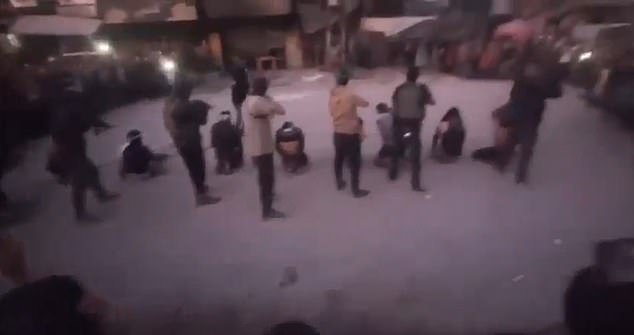President Donald Trump made headlines on Tuesday from the White House, delivering a forceful ultimatum to Hamas.
“They’re going to disarm, because they said they were going to disarm,” he said.
“If they don’t, we will disarm them. They know I’m not playing games.”
The stakes could not be higher. The stability of the Middle East—and the success of the recent Israel-Gaza peace plan—hinges on whether Hamas will follow through on disarming.
Disturbing Footage Sparks Concern
Just a day after the Israel-Gaza deal was signed, videos emerged from Gaza showing Hamas militants executing Palestinians, claiming they were targeting “Israeli collaborators.”
In reality, these are political opponents, brutally punished on the streets.
The violent displays highlight the risk that Hamas could rebuild its terror capabilities if left unchecked.
The Peace Plan and Disarmament Challenges
For months, the Foundation for Defense of Democracies (FDD) has advised both the White House and Israeli officials on how to structure the Gaza peace plan.
The key concern: disarming Hamas fully and irreversibly.
Trump’s 20-point plan includes a phased approach.
The first phase involved Israel withdrawing forces from roughly half of Gaza.
Following this, Hamas released 20 Israeli hostages, while Israel freed 2,000 Palestinian prisoners, some serving life sentences.
Phase two would see an international stabilization force deployed to enforce disarmament, train Palestinian police, and help rebuild Gaza.
Governance and Oversight
Under the plan, a temporary “Gaza Peace Board” would oversee the region, potentially chaired by Trump and including international figures like former UK Prime Minister Tony Blair, as well as representatives from Arab and Western nations.
This governance depends entirely on Hamas relinquishing its weapons—a prospect the militants and their allies in the Muslim world may attempt to sabotage.
Hamas and the Muslim Brotherhood
Hamas is just one branch of the Muslim Brotherhood, with other factions in Turkey (military) and Qatar (financial and propaganda).
The organization has long sought regional dominance and the elimination of Israel.
Its participation in the peace plan was likely motivated by the threat of a full-scale Israeli assault on Gaza City.
The United States has offered security assurances to Qatar, including hosting Qatari F-15 jets in Idaho, and may soon lift restrictions on selling F-35 jets to Turkey.
Yet, these moves do not guarantee long-term peace, as both countries may encourage Hamas to retain weapons and wait for the world to be distracted.
Lessons from Lebanon and the West Bank
History offers cautionary tales. In Lebanon, the UN’s peacekeeping mission (UNIFIL) failed to disarm Hezbollah, which operated as a shadow government until Israel intervened in 2025.
In the West Bank, Israeli forces have drastically reduced terrorist threats, but largely through their own efforts rather than relying on local security forces.
The White House fears that Gaza may face a similar situation: if the international stabilization force does not materialize, Israel could once again bear the brunt of enforcement alone, prolonging the conflict.
The White House’s Strategic Challenge
After the initial euphoria surrounding the peace deal, officials recognize the enormity of the task ahead.
Ensuring Hamas is fully disarmed will require sustained attention and political will.
The lingering question remains whether President Trump can maintain focus on this complex issue amid other global and domestic demands.
Share on Facebook «||» Share on Twitter «||» Share on Reddit «||» Share on LinkedIn